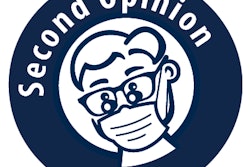
The number of opioid-related deaths in the U.S. increased by more than 300% from 2001 to 2016, according to a new study.
Researchers found that these deaths numbered just under 9,500 in 2001 and rose to more than 42,200 in 2016. However, the study authors were not able to define how the patients received the opioids. The study was published in JAMA Network Open (June 1, 2018).
"These findings highlight changes in the burden of opioid-related deaths over time and across demographic groups in the United States," the authors wrote.
The study was led Tara Gomes, PhD, of the Keenan Research Centre of the Li Ka Shing Knowledge Institute at St. Michael's Hospital in Toronto, Ontario.
Increasing rates
“These findings highlight changes in the burden of opioid-related deaths over time and across demographic groups in the United States.”
The opioid epidemic has prompted a widespread reconsideration of prescribing practices for opioid analgesics for dentists and other prescribers. But lacking precise data, the researchers wanted to find out how many deaths in the time period studies were listed as opioid-related and which gender and age groups were most affected.
The researchers used a serial cross-sectional design to identify deaths from opioid-related causes in the U.S. between January 1, 2001, and December 31, 2016. They took data from a U.S. Centers for Disease Control and Prevention database that reported mortality and population estimates sorted by age and sex.
The team identified 335,123 opioid-related deaths in the U.S. over the study period. There were 9,489 opioid-related deaths in 2001 and 42,245 opioid-related deaths in 2016 (see table below for the 2016 breakdown). The rate of opioid-related deaths climbed from 33.3 per million to 130.7 per million during the study period.
| Overall U.S. opioid-related deaths by age group in 2016 | |||
| Age in years | U.S. population in age group | No. of opioid-related deaths | Rate of opioid-related deaths, per 1 million population |
| 0 to 14 | 61,037,347 | 83 | 1.4 |
| 15 to 24 | 43,612,557 | 4,027 | 92.3 |
| 25 to 34 | 44,864,505 | 11,552 | 257.5 |
| 35 to 44 | 40,577,537 | 9,747 | 240.2 |
| 45 to 54 | 42,864,368 | 9,074 | 211.7 |
| 55 to 64 | 41,618,831 | 6,321 | 151.9 |
| Older than 65 | 49,420,383 | 1,441 | 29.2 |
| Totals | 323,995,528 | 42,245 | 130.4 |
Men accounted for more than two-thirds of all opioid-related deaths (n = 28,496) in 2016, according to the study. By age group, the researchers reported that the largest absolute increase between 2001 and 2016 was observed among those between the ages of 25 and 34 years (an increase from 4.2% in 2001 to 20.0% in 2016), followed by those between the ages of 15 and 24 years (an increase from 2.9% to 12.4%).
However, the largest relative increases occurred among adults between the ages of 55 and 64 years (a 754% increase from 0.2% in 2001 to 1.7% in 2016) and those ages 65 years and older (a 635% increase from 0.01% in 2001 to 0.07% in 2016).
Aging population concerns
The researchers noted two limitations to their study:
- Death investigations are managed at the state level, so there may be different determinations of what is and what is not an opioid-related death.
- The researchers were unable to review postmortem toxicology results. This means that some deaths not identified as opioid-related possibly were actually opioid-related, leading to the conclusion that their results underestimated the number of opioid-related deaths.
The recent increases in deaths attributable to opioids is alarming, particularly among men, the researchers concluded. They also noted that practitioners and policymakers need to pay attention to aging patients, as opioid overdoses among these adults grew at a concerning rate.
"These trends highlight a need for tailored programs and policies that focus on both appropriate prescribing and harm reduction in these demographics," they wrote.



















